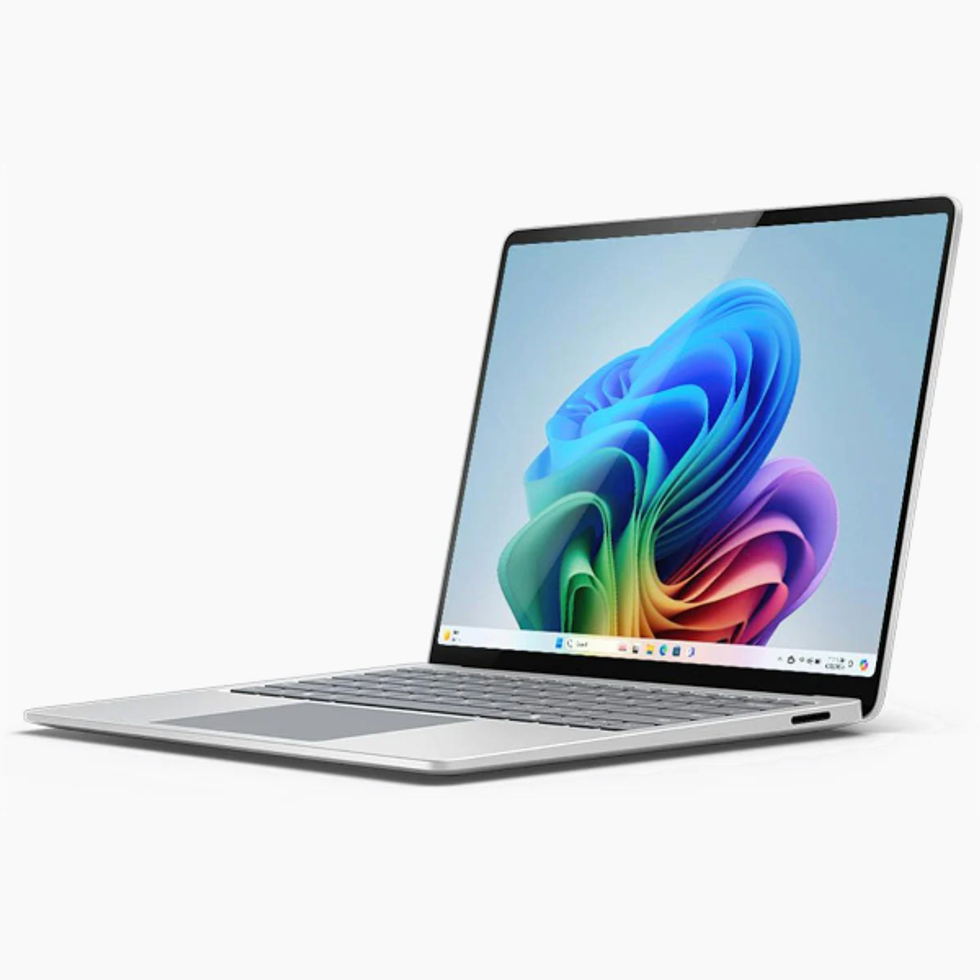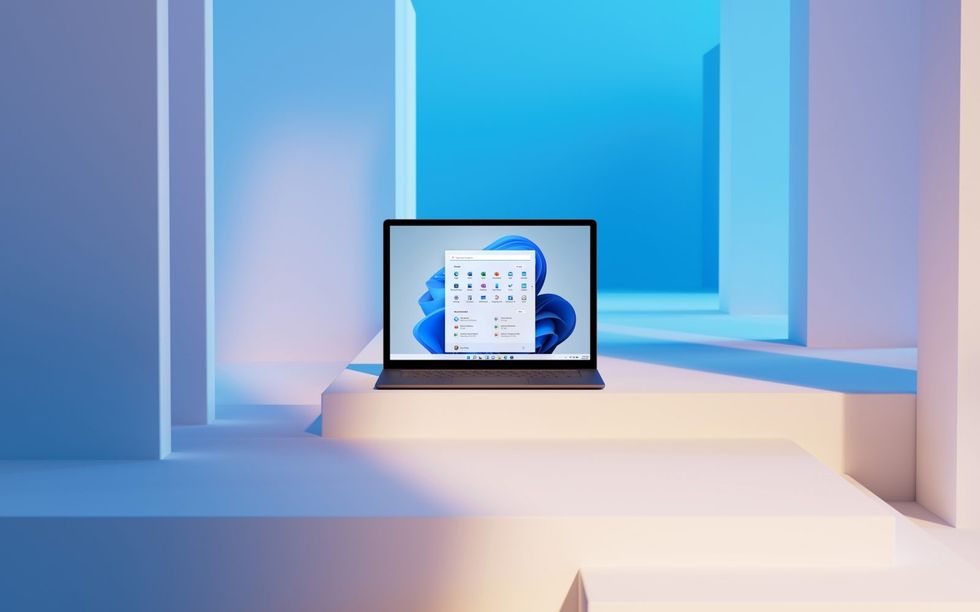Microsoft has issued a stark warning to millions of PC owners, stating that it is “imperative” they upgrade from Windows 10 to its successor before the end of October.
The warning comes as the US company confirmed its Microsoft 365 suite, which includes popular apps like Word, Outlook, PowerPoint, and Excel, would no longer be supported on Windows 10 after October 14, 2025. The deadline coincides with the End of Support deadline for Windows 10.
From October 14, Microsoft will no longer issue new software updates to fix vulnerabilities, bugs, and glitches.
Upgrade to Microsoft Surface’s latest Copilot+ PC from £1,049

The latest Microsoft Surface Laptop comes equipped with a 13.8-inch touchscreen with thinner bezels. Under the bonnet, it’s powered by Snapdragon X Elite processor for enhanced performance and battery life. This also unlocks the latest AI capabilities, like real-time translation, improved video call performance, a dedicated Copilot key on the keyboard, customisable haptic touchpad, and more
Without these vital software updates, Microsoft has warned that anyone still relying on Windows 10 will be left “at greater risk for viruses and malware”. Once a flaw in the operating system has been uncovered, hackers can continue to exploit the vulnerability in millions of PCs with no fear that Microsoft will issue a fix.
If you rely on your Windows 10 laptop, desktop PC, or tablet for online banking or other sensitive personal details, you really must ensure the operating system keeps your data safely under lock-and-key.
Like the Windows 10 operating system itself, the individual applications built into Microsoft 365 will continue to function as normal after the October 14, 2025 deadline. However, if you continue using these apps on Windows 10 after the cut-off period, you could face increasing stability problems.
Glitches or security flaws unearthed in Microsoft Word, Outlook, or Excel will no longer be patched by Microsoft, which will focus its attention on Windows 11 instead.
In a support document published last year, Microsoft cautioned that you’re likely to experience “performance and reliability issues over time” as the lack of updates and fixes start to compound.
Margaret Farmer, Microsoft Customer Success Lead, penned a blog post about the urgency of the situation. She writes: “Well, it is official. Window 10 is being retired after October 14th, 2025 and will no longer be supported. What does this mean? Your computer will still work.
“However, with security threats on the rise, it is imperative you upgrade, immediately. The great news is that you still have time to make the jump.”
Microsoft offers free upgrades to Windows 11 for anyone with a legitimate copy of Windows 10 running on their laptop or desktop PC. If you take advantage of this upgrade path, you’ll continue to receive updates and support across the operating system itself, as well as Microsoft 365 apps.
The issue? Microsoft introduced strict minimum system requirements with the advent of Windows 11, which prevent many PCs capable of running Windows 10 from taking advantage of the free upgrade. And despite rumours that Microsoft would relax its unforgiving requirements, that doesn’t seem to be the case.
The announcement marks another significant step in Microsoft’s push to transition users away from Windows 10, which currently powers more than 62% of Windows computers worldwide.
 Windows 11 reworks the design of the operating system and brings the iconic Start Menu to the centre of the screen for the first time MICROSOFT PRESS OFFICE
Windows 11 reworks the design of the operating system and brings the iconic Start Menu to the centre of the screen for the first time MICROSOFT PRESS OFFICE
For those still reliant on Windows 10, the only three solutions to the incoming deadline are:
- Upgrade to Windows 11… if you can
- Buy a new device with Windows 11 preinstalled
- Pay a yearly fee for additional support to keep using Windows 10 securely
Earlier this month, Executive Vice President and Chief Marketing Officer at Microsoft, Yusuf Mehdi said shoppers should prioritise upgrading their ageing Windows 10 machines over treating themselves to a new television or mobile phone this year. Mehdi has branded 2025 as “the year of the Windows 11 PC refresh.
In a blog post, he stressed: “We believe that one of the most important pieces of technology people will look to refresh in 2025 isn’t the refrigerator, the television or their mobile phone. It will be their Windows 10 PC, and they will move forward with Windows 11.”
Mehdi adds: “Once you have purchased your new PC, Microsoft providesa one-stop solution to make it easier to transfer your files, themes, apps and settings, ensuring a fast, secure and seamless transition.
“We believe that Windows 11 is available at a time when the world needs it most – providing advanced AI capabilities and modern security benefits that customers expect in 2025 and beyond, highlighting that the forefront of AI innovation will be realised on Windows.”
According to data from IDC, a market intelligence firm, almost 80% of all businesses plan to refresh their PC portfolio by the end of 2025. Microsoft has recently started to display full-screen prompts on Windows 10 devices to encourage users to upgrade to Windows 11.
The company has reiterated that its strict hardware requirements for Windows 11, including the need for TPM 2.0, are “non-negotiable.” This stance means millions of otherwise capable machines cannot make the transition to the newer operating system.
Microsoft is also working with manufacturers to promote its new Copilot+ PC category, which promises machines up to five times faster than popular 5-year-old Windows PCs. These devices boast a number of Artificial Intelligence (AI) features that aren’t found on any other Windows 11 installations.
 Windows 11 superseded Windows 10 back in October 2021, but despite almost three years on the market, its predecessor is still used by millions more people worldwide MICROSOFT PRESS OFFICE
Windows 11 superseded Windows 10 back in October 2021, but despite almost three years on the market, its predecessor is still used by millions more people worldwide MICROSOFT PRESS OFFICE
Those with compatible hardware can upgrade to Windows 11 for free, though Microsoft notes this offer is available for “a limited time.” For users unable to upgrade, Microsoft is offering Extended Security Updates (ESU) for Windows 10 at £24 per year per device.
This marks the first time Microsoft has offered ESU to individual consumers, though businesses can purchase up to three years of extended updates.
The final option is to continue using Windows 10 without updates, though Microsoft warns this will leave devices “at greater risk for viruses and malware.” Recent data shows Windows 10’s user base has actually grown, as more people adopt the operating system in its final months.
This trend appears to be coming at the expense of Windows 11’s market share, with Windows 10 still commanding over 62% of all Windows installations. Few PC manufacturers now sell new machines with Windows 10 preinstalled, suggesting users are actively choosing the older system.
This presents a concerning situation for Microsoft, with industry estimates indicating between 800 and 850 million PCs currently run Windows 10 or older operating systems. Around half of these devices do not meet the hardware requirements needed for Windows 11.